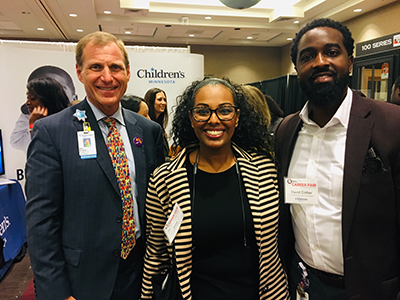By: Marc Gorelick, MD, Children’s Minnesota president and CEO
Picture a networking breakfast where several Children’s Minnesota executives had the opportunity to meet in an intimate setting with some of the top health care talent in the entire Twin Cities region, in an effort to fill approximately 150 professional vacancies in areas like nursing, pharmacy, information technology, and others.
Did you notice that those potential employees were all people of color?
I had the good fortune to attend the semi-annual Twin Cities People of Color Career Fair the other day. This was the first time Children’s has participated; it won’t be the last. The brainchild of Sharon Smith-Akinsanya, of the Rae Mackenzie Group, the POC Career Fair attracts many attendees seeking opportunities with major employers in the region.

Children’s Minnesota has made improving the diversity and inclusiveness of our workforce a priority. There are several good reasons for this. First, helping to counter centuries of systemic oppression is just the right thing to do. In addition, there is a growing body of research showing that more diverse organizations are more effective and successful. This is particularly important in health care. A workforce that better reflects the patients and communities served leads to better outcomes and patient experience and is a key strategy for closing the enormous health disparities we have in our society.
Increasing the diversity of our people isn’t going to just happen, and it can’t rely on a passive approach. One important element is ensuring that we identify the best and most diverse talent in the first place. To do that, we need to go beyond our usual approaches to recruitment. Word of mouth referrals, internal promotions, college job fairs, recruitment firms, job web sites – all of these carry a historical legacy of biases and barriers to people of color. The resulting applicant pool is therefore incomplete and unrepresentative. If we want to have the broadest possible pool of talent from which to choose, we need to reach out in different ways: recruiting at historically black colleges and universities, reaching out to professional organizations oriented to people of color (e.g., National Medical Association), and events such as the POC Career Fair.
A large number of leaders and volunteers from Children’s staffed our booth, which was a buzz of activity all day. We left with over 250 resumes from many outstanding and accomplished professionals. It was a great first step toward bringing the most talented – and diverse – people to our organization and engaging them in our mission to partner with every family in raising healthier children.